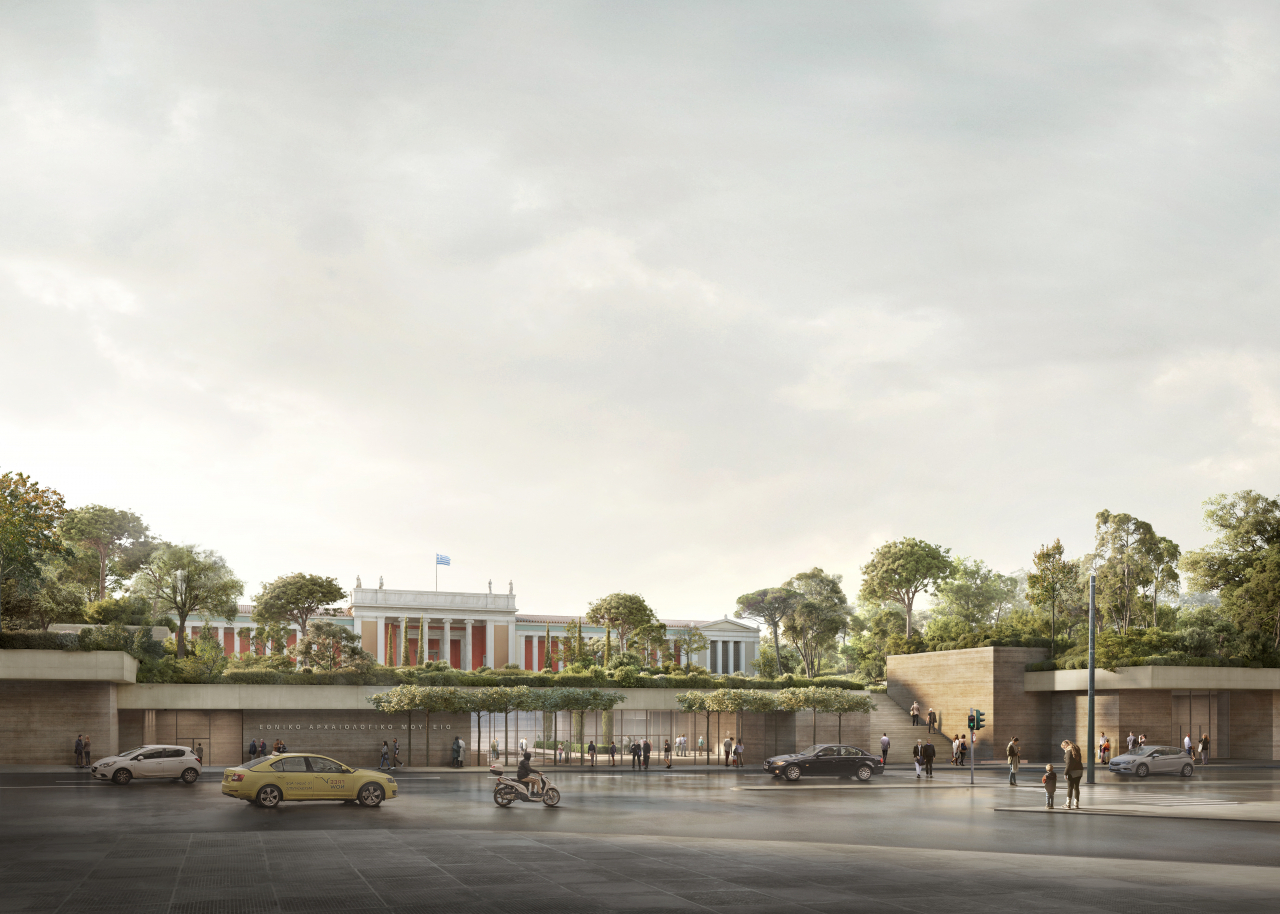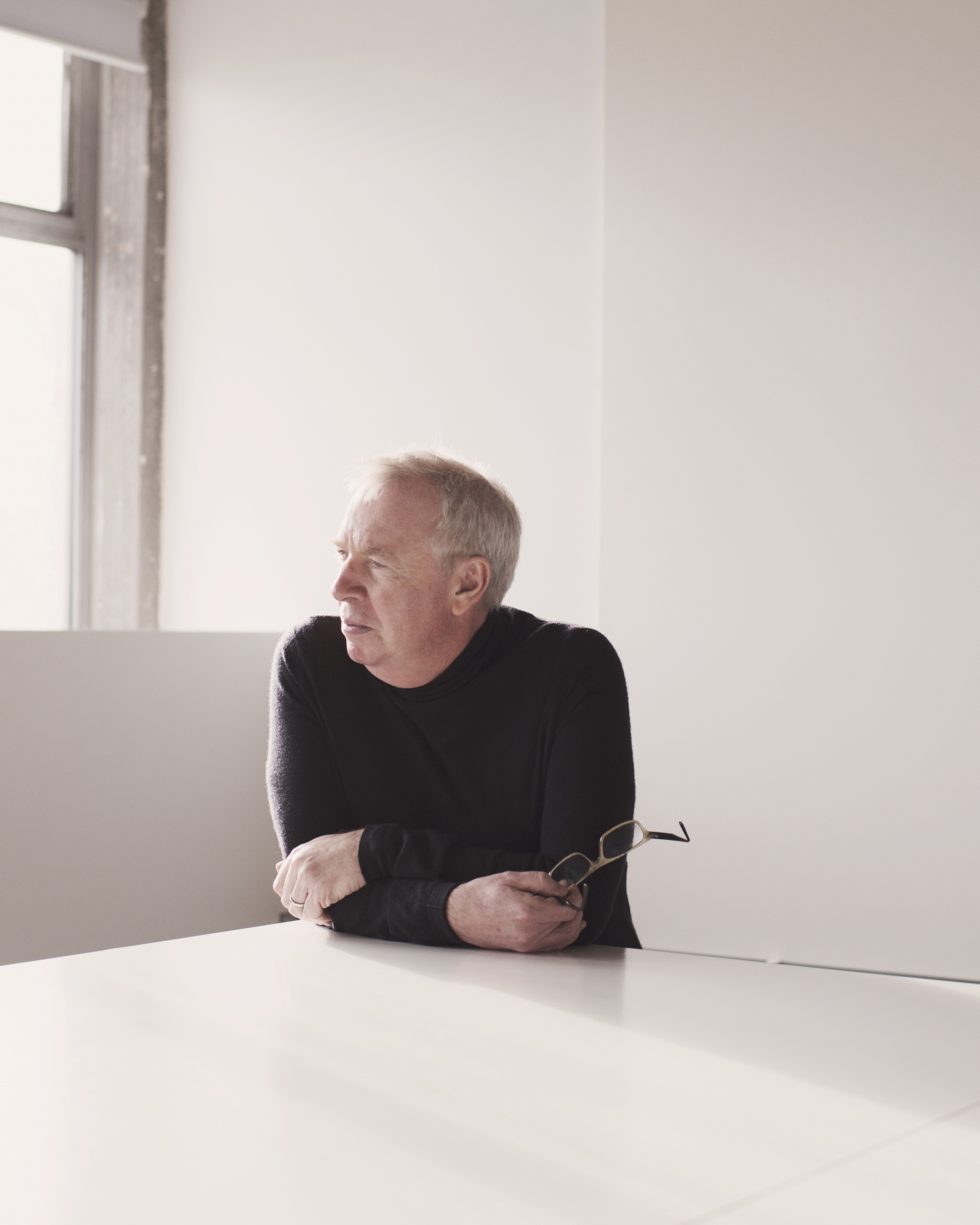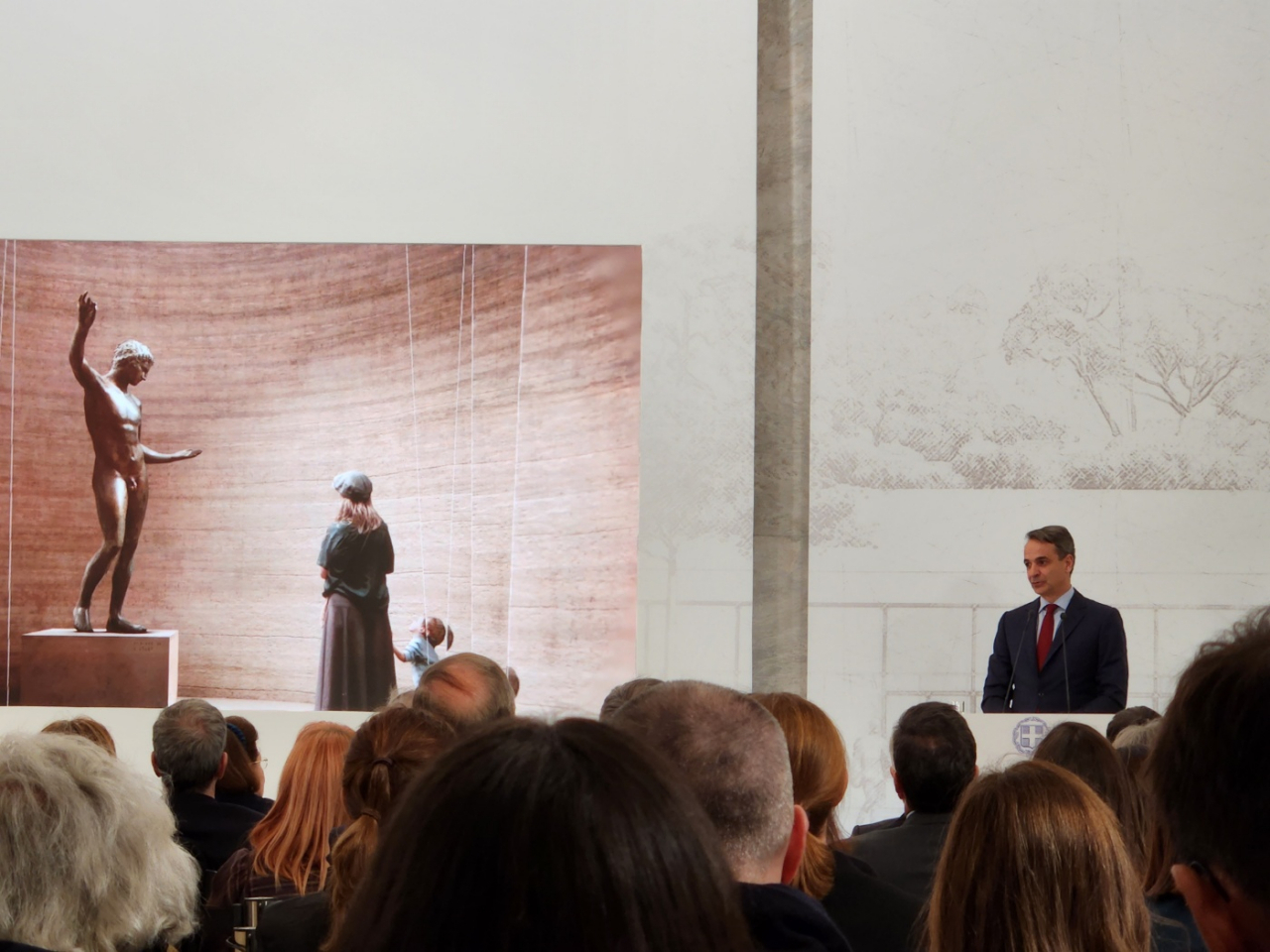[Herald interview] 'Architecture is meant to be the stage, not the play'
Architect David Chipperfield talks about challenges of adding new space to existing building at National Archaeological Museum in Athens
By Kim Hoo-ranPublished : Feb. 21, 2023 - 19:10

ATHENS, Greece -- Entering the massive National Archaeological Museum in Athens, Greece, is like stepping into a temple – one passes through a large green plaza and walks up the marble steps with the building looming large above you.
The golden Mask of Agamemnon takes pride of place, displayed in the first upright glass case that one sees upon entering the museum. From then on, it is a walk through a textbook of Greek antiquity, hall after hall lined with marble statues of gods and goddesses inspiring awe in visitors.
Only 10 percent of what the world’s foremost museum of Greek antiquity holds are on display, the rest kept in storage due to lack of space. The new extension to the museum whose design was unveiled last Wednesday aims to change that.
The seemingly unobtrusive design by David Chipperfield Architects Berlin seeks not only to enlarge the exhibition space, but also to dramatically change the viewing experience as well as engage the people outside of the exhibition space.
“It was clear from the beginning that the new building will be in the ground,” said Chipperfield in an interview with The Korea Herald at the National Archaeological Museum on Wednesday, ahead of the unveiling of the design to the public later that day. In Korea, Chipperfield is known for his Amorepacific World Headquarters building in Yongsan-gu, Seoul.
The design competition for the extension was held on the premise that the extension would not block the existing 19th century neoclassical building by German architects.
To meet its goals of creating more space and creating a new relationship between the museum and the public, Chipperfield and his team struck on the idea of a sunken space whose roof would serve as a park. As envisioned, the new extension will create 20,000 square meters of additional space and a green park on the roof.
“One idea was to make a strong park as the expression of the roof which would give a connection between the museum and become a sort of calm space connecting the museum more strongly to the city,” Chipperfield said. Passersby will have views of the exhibition spaces and the lush park will act as a public gathering place that references the ancient Greek ideal of agora.


While the new sunken extension does not compete with or deny the existing building, it will dramatically change the visitor experience.
The porous structure of the extension will allow for a freer flow with multiple points of circulation. At the same time, there will be chambers where important pieces would be shown in a concentrated, isolated way, explained Alexander Schwarz, design director at David Chipperfield Architects Berlin.
Sustainability is an imperative on all projects, according to Chipperfield, but there were several things working in the architects’ favor in the Athens museum project.
“First of all, all museum projects are difficult in terms of energy and environmental stability. They are quite demanding of energy because of the fragility of the collections. However, there is an advantage in an archaeological museum because the objects are more stable compared to paintings,” said Chipperfield, explaining that humidity is not a big issue in an archaeological museum.
“Secondly, building into the ground gives us an opportunity to create a more passive environment and that was something we wanted to optimize,” he said.
Using locally available materials such as rammed earth, as opposed to marble from China, for example, will eliminate a lot of the project’s carbon footprint, according to Chipperfield.
The new extension seems almost understated, seamlessly integrated to the existing building. How does an architect resist the urge to stamp a work with his iconic style?
“The architect as an artist, an inventor of site and identity is an old fashioned idea,” said Chipperfield. “We have to do more with less, we have to be more resourceful and be more considerate of how we use gestures.”
“Here, we already have one of the greatest archaeological collections in the world. The question is how to present it. I don’t want to go to a museum to look at the architecture. I want to go to a museum to look at the objects. So, therefore, the question is how can the architecture help my enjoyment of the objects and my enjoyment of the visit? How can it make my visit richer?” said Chipperfield.
In the age of social media and internet, it is possible to say you like a building without having been in it, so readily available are digital images. One can make pronouncements about a building without ever having experienced it.
“In the last 30-40 years, architecture has become very absorbed with imagery,” said Chipperfield, adding that while this can’t be avoided, it is a matter of priorities.
“We are convinced that the importance of this project is going to be an experiential one,” Chipperfield said. “Architecture is meant to be the stage, not the play.”
The construction of the new extension is expected to take five years, according to the architects.
“The iconic project will bring life to the neighborhood,” said Greek Prime Minister Kyriakos Mitsotakis, speaking at the presentation of the new design held at the National Archaeological Museum.
The museum is located in the Exarcheia district of Athens, a neighborhood known as an anarchist enclave and home to migrants, intellectuals and students.
Mitsotakis also noted that the initiative, to be funded by European Union and the Greek government, will greatly boost the number of visitors to the museum, which currently stands at 500,000 a year.


![[AtoZ into Korean mind] Humor in Korea: Navigating the line between what's funny and not](http://res.heraldm.com/phpwas/restmb_idxmake.php?idx=644&simg=/content/image/2024/04/22/20240422050642_0.jpg&u=)


![[Exclusive] Korean military set to ban iPhones over 'security' concerns](http://res.heraldm.com/phpwas/restmb_idxmake.php?idx=644&simg=/content/image/2024/04/23/20240423050599_0.jpg&u=20240423183955)
![[Herald Interview] Why Toss invited hackers to penetrate its system](http://res.heraldm.com/phpwas/restmb_idxmake.php?idx=644&simg=/content/image/2024/04/22/20240422050569_0.jpg&u=20240422150649)
![[Graphic News] 77% of young Koreans still financially dependent](http://res.heraldm.com/phpwas/restmb_idxmake.php?idx=644&simg=/content/image/2024/04/22/20240422050762_0.gif&u=)







![[Exclusive] Korean military to ban iPhones over security issues](http://res.heraldm.com/phpwas/restmb_idxmake.php?idx=652&simg=/content/image/2024/04/23/20240423050599_0.jpg&u=20240423183955)



![[Today’s K-pop] Ateez confirms US tour details](http://res.heraldm.com/phpwas/restmb_idxmake.php?idx=642&simg=/content/image/2024/04/23/20240423050700_0.jpg&u=)